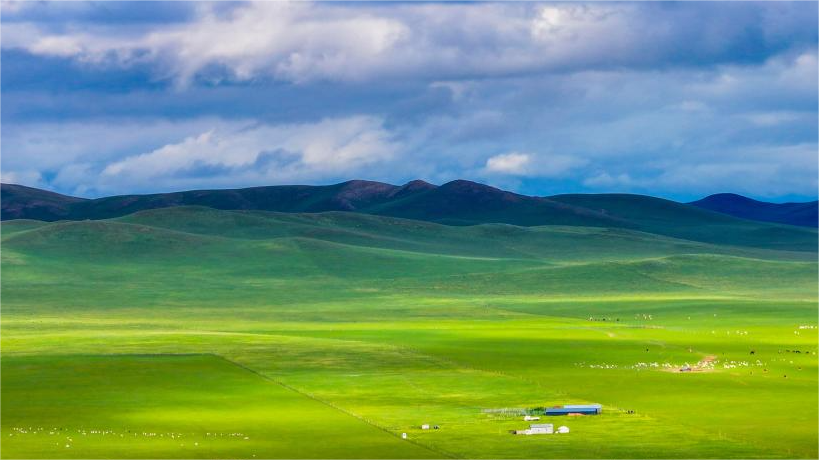Mangrove conservation affords village fresh opportunities to flourish
GUANGZHOU, July 17 (Xinhua) -- In the childhood memories of Xu Hechang, mangroves that carry global ecological significance were nothing more than firewood.
"To us, mangroves were just ordinary trees in everyday life. Some people cut and burned them for cooking and mangrove forests were shrinking," said Xu, 36, who grew up and lives in Shiqiao Village, Zhanjiang City at the southernmost tip of China's mainland.
Adapted to living in salt and brackish water, mangroves are found along coasts and estuaries in 123 countries in the tropics and subtropics, according to the United Nations Environment Program. Mangrove forests provide protection against storms, erosion and flooding, improve water quality, offer natural habitats to over 1,500 species, and benefit adjacent ecosystems such as coral reefs.
The mangrove forests in Shiqiao Village are part of the Zhanjiang Mangrove National Nature Reserve, the largest of its kind in China. Above the lush mangroves, flocks of egrets are often seen hovering between the blue sky and the azure sea. Occasionally, small boats packed with eager tourists cleave through placid waters and venture deep into the dense forests.
Gazing upon the breathtaking landscape, Xu knows well the arduous work it took to upkeep such beauty. He said that since 2012 the Zhanjiang Mangrove National Nature Reserve has ratcheted up efforts to protect and restore the plants.
Among other measures, the reserve increased the number of forest rangers, cleared illegal constructions, removed invasive species, and leveraged satellite remote sensing, video surveillance and drone patrols for targeted protection, and planted mangroves in areas where forests were damaged.
In a latest move, earlier this month Zhanjiang City launched a mangrove culture center, where visitors can acquire more knowledge about mangroves and have a clearer understanding of why the plants should be preserved.
In a sign of improved ecological environment, biodiversity in mangrove forests is increasing. The number of bird species observed in the reserve rose from 194 in 2002 to 312 in 2023.
"Today, everyone understands that mangrove forests are invaluable national assets and should be safeguarded as we protect our own eyes," Xu said.
The conservation of mangroves is a matter of global concern. On July 26 last year, the International Day for the Conservation of the Mangrove Ecosystem, the United Nations Food and Agriculture Organization reported that over 20 percent of mangroves were estimated to have been lost globally over the past 40 years mainly due to both human activities and natural retraction.
Guided by the vision that "green is gold," China has intensified action to conserve and restore mangroves over the past decade. Zhanjiang is a microcosm of the achievements made in the country.
Latest data showed that the area of mangrove forests in China stood at 29,200 hectares, an increase of about 7,200 hectares from the beginning of this century, making China one of the few countries globally recording a growth in mangrove forest area.
According to the Special Action Plan for the Conservation and Restoration of Mangrove Forests (2020-2025), China is committed to creating 9,050 hectares of new mangroves and restoring 9,750 hectares of existing mangroves by 2025.
Flourishing mangrove forests are not just a feast for the eyes but also a source of wealth for Shiqiao villagers.
Some of the inhabitants now engage in fish, shrimp and crab farming in waters under mangrove forests. It has been made possible through the support and expertise of scientists from the Zhanjiang Bay Laboratory, which specializes in oceanic science and engineering.
Jiang Gaoqian, a researcher at the Zhanjiang Bay Laboratory's mangrove conservation research center, said that mangroves and the commercially valuable marine life can coexist in a harmonious manner, mutually benefiting each other.
The center is actively addressing challenges such as low aquaculture output, and with continuous technological advancements, aquaculture in mangrove forests is expected to enable a larger number of villagers to raise income, Jiang added.
As mangroves become more popular among Chinese people, Shiqiao Village has emerged as a hot destination for those who wish to observe these remarkable plants up close. According to Xu, many of his fellow villagers are preparing for the summer travel season.
"We will try to strike a balance between protecting mangroves and boosting economic development. It is crucial to establish a 'red line' where the eco-environment remains unharmed," he said.
(Xiao Jiatong, Cui Chenshuo, Du Yi, Lin Yujing, Lyu Jiayin, Meng Zhuoning, Li Yuxuan and Wu Can also contributed to the story.)
Photos
Related Stories
- Shaanxi's Fuping County makes efforts to improve ecological environment
- China plans to build more beautiful bays to improve marine ecology
- China's green milestones in combating desertification
- Explainer: Key takeaways from world's largest afforestation project
- Innovation fortifies China's "green Great Wall" against desertification
Copyright © 2024 People's Daily Online. All Rights Reserved.









